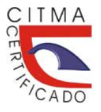TENDENCIAS ACTUALES PARA EL TRABAJO DE LAS CAPACIDADES FÍSICAS CON ADULTOS MAYORES EN LA COMUNIDAD / CURRENT TENDENCIES FOR THE WORK OF THE PHYSICAL CAPACITIES WITH BIGGER ADULTS IN THE COMMUNITY
Palabras clave:
Condición Física, Capacidades Físicas, Adultos Mayores, ComunidadResumen
Los autores en el presente artículo exponen un conjunto de consideraciones relacionadas con las tendencias actuales para el trabajo de las capacidades físicas con los adultos mayores en la comunidad, lo antes planteado ha sido el fruto constante y sistemático de los logros alcanzados durante los últimos 15 años de trabajo investigativo del Proyecto Diagnóstico y Orientación de las Actividades Físicas para el Adulto Mayor. Papel decisivo alcanzado con la inserción de los estudiantes de las carreras: Educación Física, 8vo semestre de la Universidad de Sotavento A.C, Estado de Veracruz, México y la Facultad de Cultura Física de la Universidad de Ciego de Ávila Máximo Gómez Báez, Cuba. Los autores destacan que para el logro de los resultados esperados, se debe partir del diagnóstico integrador como eje cardinal que define el estado de la condición física de los investigados que permita el trabajo de las capacidades físicas, fuerza, resistencia y la flexibilidad, todas ellas en correspondencia con posibilidades individuales de los integrantes de este grupo etario
Descargas
Citas
Alexandre NB, Schultz AB, Warwick DN. (1991) Rising from a chair: effects of age and functional ability on performance biomechanics. J Gerontol Med. Sci. 1991; 46: M91-M98. (11)
Bravo G, Gauthier P, Roy P, Tessier D, Gaulin P, Dubois M, Peloquin K. (1994) The functional fitness assessment battery: reliability and validity data for elderly women. J Aging Phys Act. 1994; 2: 67-79. (17)
Bittner V, Weiner DH, Yusuf S, Rogers WJ, McInty KM, Bourassa MG. (1993) Prediction of mortality and morbidity with a 6-minute walk test in patients with left ventricular dysfunction. JAMA. 1993; 270: 1702-1707. (19)
Brouha L. A (1943) step test: a simple method of measuring Physical fitness for muscular work in young men. Res Q. 1943; 14: 31-36. (20)
Chirosa R,. Luís J,. Ignacio J., y Radial P., P. (2000) La Actividad Física en la Tercera Edad, Revista Digital EF deportes. # 18 Febrero Argentina. 2000. 3-4 pp. Disponible en: http://www.efdeportes.com Visitado el 06 de noviembre de 2013. (4)
Cooper KH. (1968) Amenas of assessing maximal oxygen intake. JAMA. 1968; 203: 135-138. (14)
Cotten DJ. (1971) A modified step test for group cardiovascular testing. Res Q. 1971; 42: 91-95. (21)
Csuka M, McArty DJ. (1985) Simple method for measurement of lower extremity muscle strength. Am J Med. 1985; 78: 77-81. (9)
Disch J, Frankiewicz R, Jackson A. (1975) Construct validation of distance run tests. Res Q. 1975; 46: 169-176. (15)
James TW. (1999) The 30-second arm curl test as an indicator of upper body strength in older adults. Unpublished master´s thesis, California State University, Fullerton. 1999. (6)
Jackson AW, Baker AA. (1986) The relationship of the sit and reach test to criterion measures of hamstring and back flexibility in young females. Res Q. 1986; 157: 183-186. (23)
Katz S, Stroud MW.(1989) Functional assessment in geriatrics: a review of progress and directions. J Am Geriatr Soc.1989; 37: 267-271. (1)
Libro "Entrenamiento de la Fuerza para la Tercera Edad", de Westcott y Baechle. (13)
McArdle WD, Katch FI, Pechar GS, Jacobson L., Ruck S. (1972) Reliability and interrelationships between maximal oxygen intake, physical work capacity and step-test scores in college women. Med Sci Sports. 1972; 4: 182-186. (22)
Miotto JM, Chodzko-Zajko WJ, Reich JL, Supler MM. (1999) Reliability and validity of the Fullerton Functional Fitness Test: and independent replication study. J Aging Phys Act. 1999; 7: 339-353. (8)
McRae SB, Weatherhead PJ, Montgomeric R. American Robin (1993) nestlings compete by jockeying for position. Behav Ecol Sociobiolog. 1993; 33: 101-106. (10)
Osness WH, Adrian M, Clark B, Hoeger W, Rabb D, Wisnell R. (1996) Functional fitness assessment for adults over 60 years. Dubuque IA: Kendall/Hunt. 1996 (5)
Peloquin L, Gauthier P, Bravo G, Lacombre G, Billiard J. (1998) Reliability and validity of the 5-minute walking field test for estimating VO2 peak in elderly subjects with knee osteoarthritis. J Aging Phys Act. 1998; 6: 36-44. (18)
Rikli RE, Jones CJ. (2001) Senior Fitness Test Manual. Champaign IL: Human Kinetics 2001. (2)
Rikli RE, Jones CJ. (1999) Development and validation of a functional fitness test for community-residing older adults. J Aging Phys Act. 1999; 7:127-159. (7)
Shephard R. (1978) Physical Activity and Aging. Chicago. Year Book Medical Publishers 1978. (3)
Tinetti ME, Speechley M, Ginter SF. (1988) Risk factors for falls among elderly persons living in the community. N Engl J Med. 1988; 319: 1701-1707. (12)
Warren BJ, Dotson RG, Nieman DC, Butterworth DE. (1993) Validation of a 1-mile walk test in elderly women. J Aging Phys Act. 1993; 1: 13-21 (16)





















